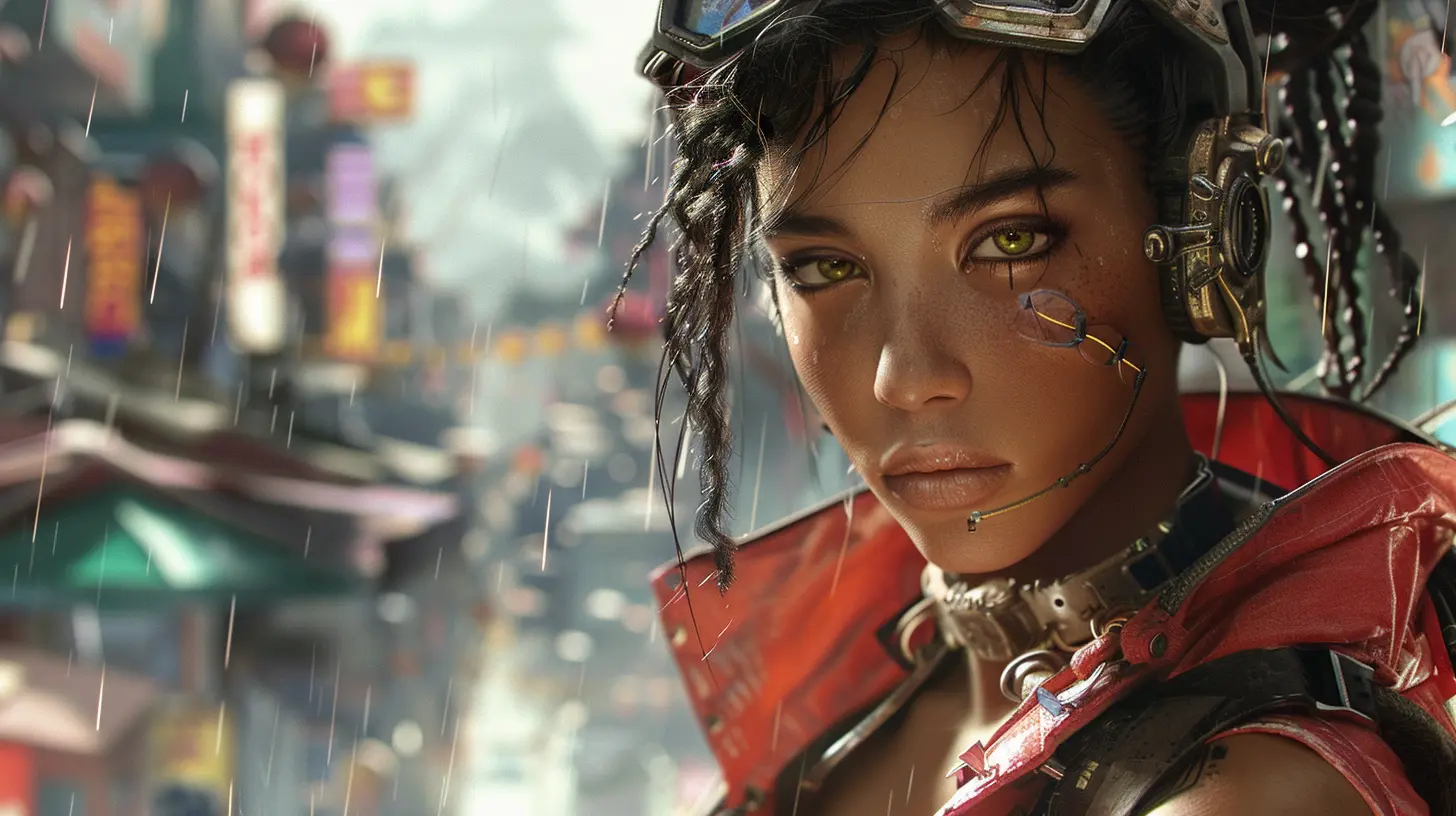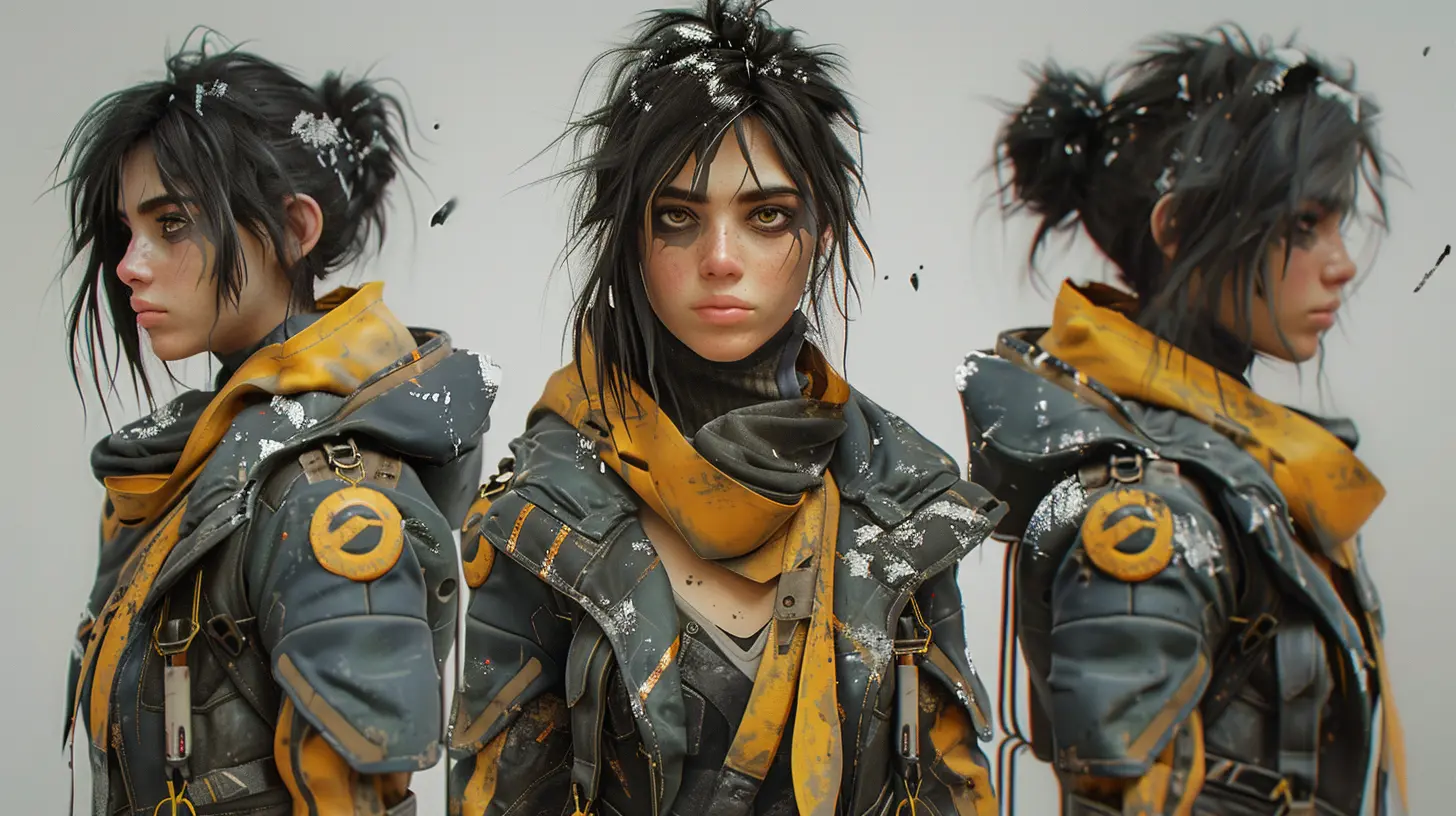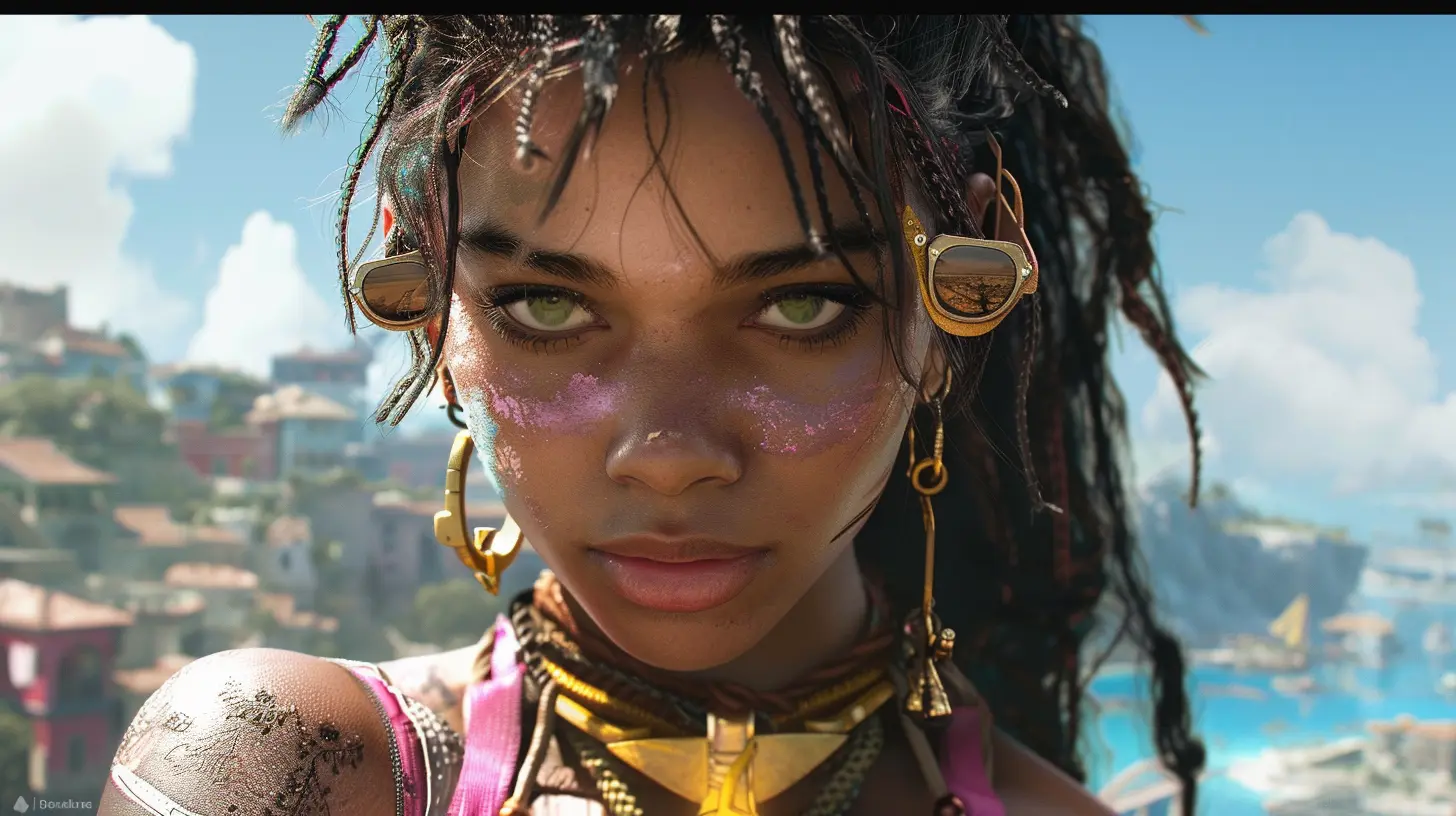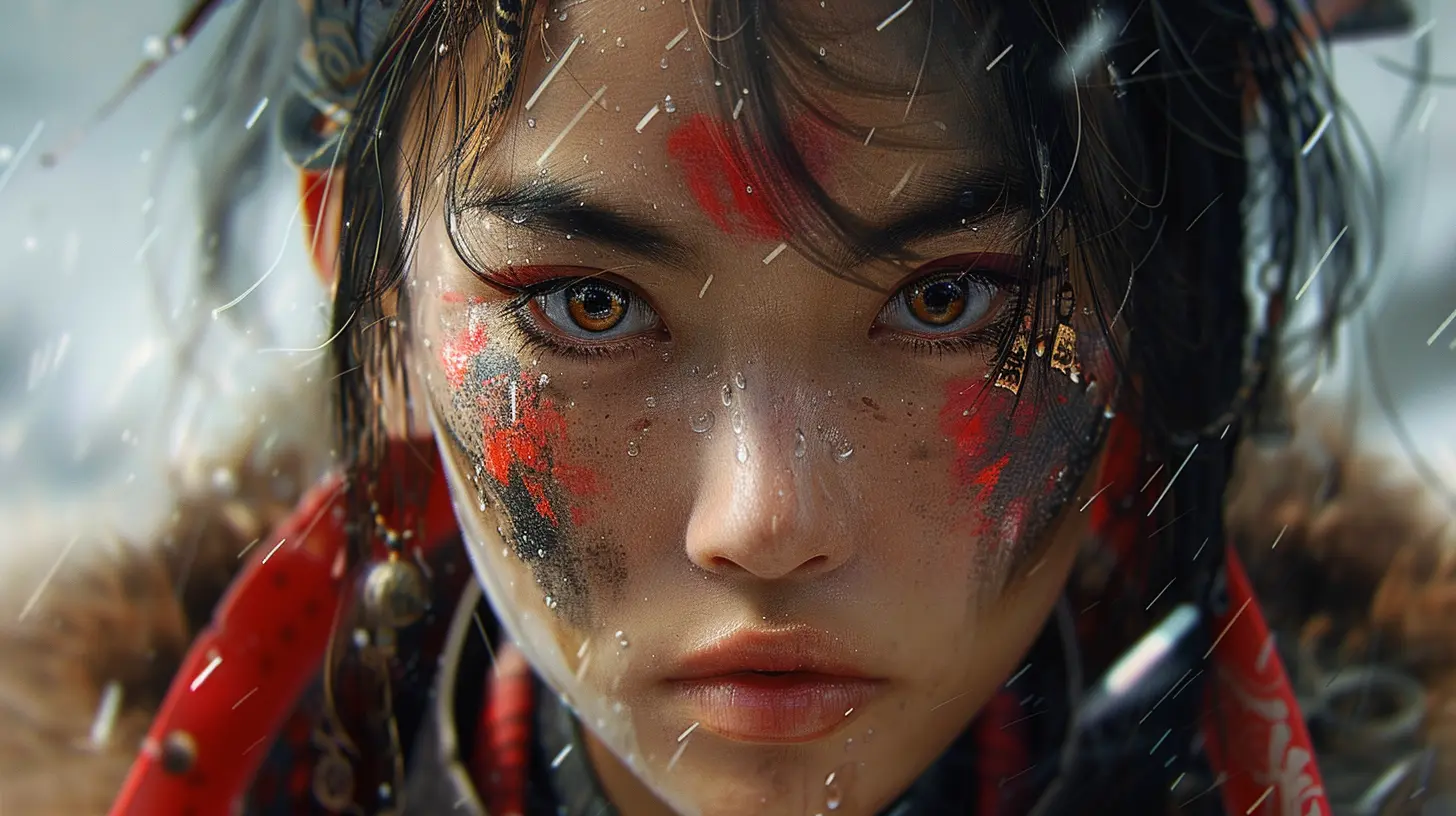Beyond Aesthetics: How Character Customization Impacts Gameplay
1 January 2025
Ever spent hours crafting the perfect version of yourself—or your alter ego—in a game, only to realize you’re still on the intro screen? Yeah, same here. Character customization feels like an art form these days, with games offering an almost overwhelming amount of options. But let’s get real for a sec—it goes way beyond just picking a cool hairstyle or deciding whether your avatar rocks a leather jacket or a wizard robe. In fact, the rabbit hole of character customization runs deeper than you’d think.
It’s not just about looking good (though looking like a total badass certainly helps); it impacts how you play, how you connect to the world, and even how much fun you have. So grab your potion of patience, and let’s dive into how character customization shapes gameplay in ways that might surprise you. 
Why We Obsess Over Character Customization
Let’s face it: humans are naturally drawn to personalization. It’s like peeling an orange; no two people will do it the same way. When you jump into a game, creating your character is often your first taste of freedom and creativity. Whether you're designing the hero of a sprawling RPG or just spicing up your avatar in a battle royale, customization gives you the ability to project your personality onto your virtual self.Think about it—through color palettes, facial features, or even some quirky accessories, you’re likely crafting someone (or something) that represents a piece of you. Or maybe it’s who you wish you could be. A Viking princess with a mohawk? Sure, why not? A futuristic cowboy with neon tattoos? Heck yeah. What’s important is that customization hooks you right from the start, making the experience feel personal.
But here’s the kicker: this isn’t just an aesthetic choice. In many cases, your character’s design directly influences how you interact with the game world. 
The Psychological Connection
Ever notice how attached you feel to a well-crafted character? It’s not random—it’s psychology at work. Customizing a character gives you a sense of ownership, which amps up immersion. Instead of controlling some generic “chosen one” or faceless soldier, you’re guiding your creation. That connection makes everything you do feel more impactful.When you choose how your character looks, acts, or even fights, you’re injecting a piece of yourself into the game. You start caring more about their story, their struggles, and their victories. It’s like playing dress-up as a kid, but with higher stakes (and way cooler outfits).
Plus, many games ramp up that emotional investment by tying character appearance to in-game decisions. For example, in RPGs like The Elder Scrolls V: Skyrim or Mass Effect, your customized hero isn’t just a pretty face—they’re often judged by NPCs based on how they look or behave. Whether it’s your scars, your armor, or even how you carry yourself, your choices matter.
Representation Matters
Here’s where things get a little deeper. For a long time, gamers didn’t exactly have a ton of options when it came to creating characters that reflected them. Diversity in customization—whether it’s skin tones, body types, or cultural elements—was often overlooked.But times have changed (finally), and we’re seeing games embrace inclusivity. Think about titles like The Sims 4, which offers an insane range of gender identities, or Cyberpunk 2077, which lets you mix and match features in ways that are completely unique. When people see themselves represented in a game, it’s more than just cool—it’s validating. It’s like the game is saying, “Hey, you belong here.”
For players from underrepresented backgrounds, being able to customize a character to reflect their real-life self can be incredibly empowering. And for everyone else? Well, it’s a great way to explore new perspectives and appreciate diversity. 
Gameplay Mechanics That Depend on Customization
Here’s the funny part: sometimes, customization isn’t just about you. It impacts how the game itself plays out. Developers often tie gameplay mechanics to your choices during character creation.Skill Trees and Stats
Ever played an RPG where your character’s starting stats depend on their background or class? Yup, that’s customization influencing gameplay. Your choice of being a sneaky rogue versus a burly warrior doesn’t just change how you look—it changes how you approach challenges.Some games let you finely tune these elements during creation, while others force you to make decisions based on your race, class, or even profession. For example, a dwarven blacksmith might excel in crafting weapons but struggle with stealth missions.
Adaptive Storytelling
Games like Dragon Age and The Outer Worlds take this to the next level with branching narratives that shift based on who your character is. Your choices in customization—like your backstory or personality traits—can unlock specific dialogues or even entire quest lines. It’s sort of like a “choose your own adventure” book, except way more complex (and with fewer paper cuts).And let’s not forget the social element. In games with multiplayer components, your appearance can even influence how other players interact with you. Ever noticed how rocking intimidating armor in a PvP game makes people think twice before attacking you? Yeah, it’s like wearing a “Don’t Mess With Me” sign. 
The Role of Fashion in Combat
Okay, let’s switch gears and talk about gear—because fashion in games isn’t just for show. In many games, the armor, weapons, and accessories you slap onto your character aren’t just cosmetic; they’re tied directly to gameplay mechanics.In titles like Dark Souls or Monster Hunter: World, the gear you choose can define your playstyle. Heavy armor might protect you better, but it’ll slow you down. Meanwhile, a lightweight outfit might leave you vulnerable but allow for faster dodges. Suddenly, your outfit isn’t just a fashion statement—it’s a strategy.
Some games even make you think twice about blending practicality with style. Sure, that glowing sword looks epic, but does it actually help you win battles? It’s the ultimate trade-off between looking cool and staying alive.
Customization as a Reward
Let’s be honest: unlocking new customization options feels amazing. Whether it's scoring a rare outfit in a loot box or earning a legendary weapon skin after hours of grinding, cosmetic rewards are a huge motivator. Developers know this, which is why many games tie customization options to achievements or milestones.Take Fortnite, for example. Players don’t just get new outfits handed to them—they have to work for them through battle passes and challenges. The result? Those outfits feel way more special because you actually earned them.
And it’s not just about bragging rights. In competitive games, your appearance can signal your skill level. A rare skin or high-level outfit tells opponents, “I’ve sunk hours into this game, and I know what I’m doing.” It’s both a flex and a target on your back.
The Downside of Too Many Options
Now, let’s address the elephant in the room: sometimes, character customization can feel overwhelming. With hundreds of sliders for everything from eyebrow height to cheekbone depth, it’s easy to fall into the trap of analysis paralysis.Plus, having too many choices can be frustrating if the game mechanics don’t clearly explain the impact of your decisions. Sure, your elf wizard looks awesome, but did you accidentally tank their magical abilities because you didn’t realize ear length affects mana regeneration? Oof.
That said, more options are usually better than fewer. The key is striking a balance between freedom and functionality. Developers need to guide players just enough to avoid frustration while still letting them experiment.
Looking Beyond the Surface
At the end of the day, character customization is about more than just aesthetics. It influences how we play, how we connect with the game world, and even how we see ourselves. It’s a tool for storytelling, an avenue for self-expression, and sometimes, a clever way for developers to mess with our heads.Whether you’re crafting your dream hero or just goofing off with a wacky creation, customization adds a deeply personal layer to gameplay. It’s like painting a canvas where the masterpiece isn’t just what you see—it’s what you experience.
So the next time you spend a little too long in the character creation screen, don’t sweat it. You’re not procrastinating—you’re setting the stage for an adventure that’s uniquely yours. And isn’t that what gaming is all about?
all images in this post were generated using AI tools
Category:
Character CustomizationAuthor:

Tayla Warner
Discussion
rate this article
8 comments
Honor McFadden
Character customization makes gaming so much more fun!
January 29, 2025 at 4:42 PM

Tayla Warner
Absolutely! Character customization enhances player engagement and can influence gameplay strategies, making the experience more immersive and personal.
Alexa Hernandez
Great insights! Character customization enriches gameplay by enhancing player identity and investment. It’s fascinating how aesthetics can influence strategies and interactions, creating a deeper connection to the game world and personal experiences. Well done!
January 23, 2025 at 4:04 AM

Tayla Warner
Thank you! I’m glad you found the insights valuable. Character customization truly does play a crucial role in shaping player experiences and strategies.
Leah Perez
Because nothing boosts morale like a flamingo-themed warrior! 🎮🌈
January 11, 2025 at 5:48 PM

Tayla Warner
Absolutely! Unique character designs, like a flamingo-themed warrior, can enhance player engagement and foster a sense of identity, boosting overall gameplay enjoyment. 🎮🌟
Vesper Hensley
This article offers an insightful perspective on character customization's influence on gameplay. It's fascinating how personal expression can enhance engagement and player experience. Well done!
January 7, 2025 at 3:50 PM

Tayla Warner
Thank you! I'm glad you found the perspective on character customization engaging. Personal expression truly does enrich the gameplay experience!
Mila Alexander
Great insights! Customization truly enhances our connection to the game.
January 6, 2025 at 5:54 PM

Tayla Warner
Thank you! I'm glad you found the insights valuable. Customization indeed deepens player engagement and enhances the overall experience.
Corin McGrady
Absolutely loved this article! Character customization adds so much depth and joy to gaming, allowing players to express themselves uniquely. It’s amazing how personal touches can enhance the overall experience. Can’t wait to explore more games with customization options!
January 5, 2025 at 6:06 PM

Tayla Warner
Thank you! I’m glad you enjoyed it. Character customization truly enriches the gaming experience in so many ways!
Ryan Gibson
This article sparks such fascinating insights! The interplay between character customization and gameplay often goes unnoticed. I’m curious about how different customization choices can affect player strategy and immersion. Have developers seen any surprising trends in player preferences that enhance the overall gaming experience? Looking forward to deeper exploration!
January 4, 2025 at 4:46 AM

Tayla Warner
Thank you for your thoughtful comment! Character customization indeed plays a crucial role in shaping player strategy and immersion. Developers have observed trends where unique customization choices can lead to diverse gameplay styles and foster deeper connections to characters. We’ll explore these insights further in upcoming discussions!
Hawk McGillivray
Great read! It’s fascinating how character customization goes beyond just looks and really enhances the gameplay experience. Connecting with a unique character can totally change how we engage with the game. Can’t wait to see how future titles expand on this!
January 2, 2025 at 5:23 AM

Tayla Warner
Thank you! I’m glad you enjoyed it. Character customization truly adds a personal touch that deepens immersion and engagement—excited to see where it goes next, too!
MORE POSTS

How Streaming Platforms Are Revolutionizing Multiplayer Gaming

Initial Thoughts on a Brand-New Puzzle Masterpiece

The Impact of Soundtracks on the Platformer Gaming Experience

Impactful Combat Systems: What Makes or Breaks an Action Game

Death Stranding’s Easiest Routes: A Complete Delivery Walkthrough

Building the Perfect Anti-Hero: Using Customization for Storytelling